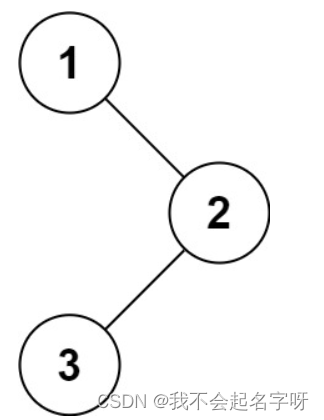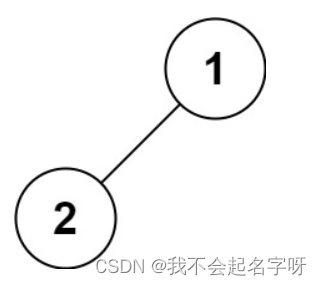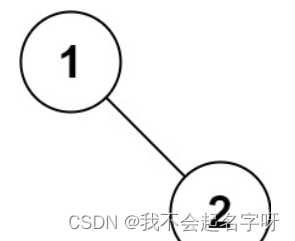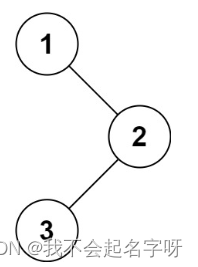leetcode144、二叉树的前序遍历
给你二叉树的根节点 root ,返回它节点值的 前序 遍历。
示例 1:

输入:root = [1,null,2,3]
输出:[1,2,3]
示例 2:
输入:root = []
输出:[]
示例 3:
输入:root = [1]
输出:[1]
示例 4:

输入:root = [1,2]
输出:[1,2]
示例 5:

输入:root = [1,null,2]
输出:[1,2]
提示:
树中节点数目在范围 [0, 100] 内
-100 <= Node.val <= 100
递归法
void preOrder(struct TreeNode* root,int* ret,int* returnSize){if(root==NULL)return;ret[(*returnSize)++]=root->val;preOrder(root->left,ret,returnSize);preOrder(root->right,ret,returnSize);}
int* preorderTraversal(struct TreeNode* root, int* returnSize) {int* ret=(int*)malloc(sizeof(int)*100);*returnSize=0;preOrder(root,ret,returnSize);return ret;
}
迭代法
int* preorderTraversal(struct TreeNode* root, int* returnSize){int* res=malloc(sizeof(int)*2000);*returnSize=0;if(root==NULL)return res;struct TreeNode* stk[2000];int stk_top=0;while(stk_top>0||root!=NULL){while(root!=NULL){res[(*returnSize)++]=root->val;stk[stk_top++]=root;root=root->left;}root=stk[--stk_top];root=root->right;}return res;
}
leetcode94、二叉树的中序遍历
给定一个二叉树的根节点 root ,返回 它的 中序 遍历 。
示例 1:

输入:root = [1,null,2,3]
输出:[1,3,2]
示例 2:
输入:root = []
输出:[]
示例 3:
输入:root = [1]
输出:[1]
提示:
树中节点数目在范围 [0, 100] 内
-100 <= Node.val <= 100
递归法
void inorder(struct TreeNode* root,int* ret,int* returnSize){if(root==NULL) return;inorder(root->left,ret,returnSize);ret[(*returnSize)++]=root->val;inorder(root->right,ret,returnSize);}int* inorderTraversal(struct TreeNode* root, int* returnSize) {int* ret=(int*)malloc(sizeof(int)*100);*returnSize=0;inorder(root,ret,returnSize);return ret;
}
迭代法
int* inorderTraversal(struct TreeNode* root, int* returnSize) {int* res=malloc(sizeof(int)*2000);*returnSize=0;if(root==NULL)return res;struct TreeNode* stk[2000];int stk_top=0;while(stk_top>0||root!=NULL){while(root!=NULL){stk[stk_top++]=root;root=root->left;}root=stk[--stk_top];res[(*returnSize)++]=root->val;root=root->right;}return res;
}
leetcode145、二叉树的后序遍历
给你一棵二叉树的根节点 root ,返回其节点值的 后序遍历 。
示例 1:

输入:root = [1,null,2,3]
输出:[3,2,1]
示例 2:
输入:root = []
输出:[]
示例 3:
输入:root = [1]
输出:[1]
提示:
树中节点的数目在范围 [0, 100] 内
-100 <= Node.val <= 100
递归法
void postorder(struct TreeNode* root,int* ret,int* returnSize){if(root==NULL) return;postorder(root->left,ret,returnSize);postorder(root->right,ret,returnSize);ret[(*returnSize)++]=root->val;}
int* postorderTraversal(struct TreeNode* root, int* returnSize) {int* ret=(int*)malloc(sizeof(int)*100);*returnSize=0;postorder(root,ret,returnSize);return ret;
}
迭代法
int* postorderTraversal(struct TreeNode* root, int* returnSize) {int* res=malloc(sizeof(int)*2000);*returnSize=0;if(root==NULL)return res;struct TreeNode* stk[2000];struct TreeNode* prev=NULL;int stk_top=0;while(stk_top>0||root!=NULL){while(root!=NULL){stk[stk_top++]=root;root=root->left;}root=stk[--stk_top];if(root->right==NULL||root->right==prev){//右子树遍历完res[(*returnSize)++]=root->val;//输出根节点prev=root;root=NULL;}else{//右子树未遍历完stk[stk_top++]=root;//根节点入栈root=root->right;//遍历右子树}}return res;
}

)



![[译]全栈Redux实战](http://pic.xiahunao.cn/[译]全栈Redux实战)




)




)



